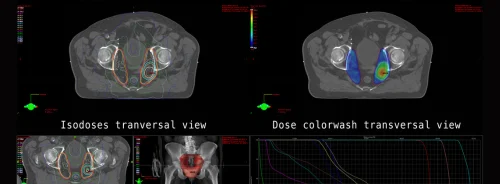It is widely acknowledged that Picture Archiving and Communication Systems (PACS), Vendor Neutral Archives (VNA), and Enterprise Imaging Solutions have revolutionised the storage, sharing, interpretation, and management of medical images. As technology advances and the demand for data sharing increases, image management solutions are experiencing new trends.
Today's image management solutions have undergone significant evolution to support a more collaborative and efficient means of delivery and discovery. The goal of these solutions is to enhance the patient experience and leverage data to facilitate transformative healthcare. As the volume and diversity of image data continue to expand, it requires an enterprise approach, focusing on data collection to improve the quality of care and speed of treatment.
However, as the demand for consuming and sharing images increases, it is important to ensure that these processes adhere to an organisation's privacy and security requirements.
Five key trends are molding the future of enterprise imaging PACS and VNA solutions.
The demand for employing cloud-based solutions in image management deployments is steadily increasing, as healthcare providers pursue greater efficiencies in data management. Solution providers now offer cloud-hosted, hybrid-cloud, and cloud-adjacent solutions, which offer various benefits such as on-demand scalability and as-a-service cost models. Challenges exist through the cost, security, and performance expectations which hospitals require.
Artificial intelligence is changing the way we analyse and interpret medical images. AI tools are beneficial for reducing the workload of radiologists by automating repetitive tasks, so radiologists can focus on more complex cases and improve workflow efficiency.
However, challenges exist in relation to ensuring the proper infrastructure is in place to facilitate data growth and analytic requirements of more advanced use cases.
Healthcare providers place significance on establishing tighter integration with Electronic Health Records and automating workflows. Integrating image management solutions with EHRs significantly enhances data accessibility and supports seamless collaboration among healthcare professionals, improving the delivery of care. With an integrated approach, they can access patient images and health information as a single system, providing them with a complete view of a patient’s state.
In light of the rising threats and cyber-attacks, today’s image management infrastructures now encompass advanced capabilities to enhance the security of data stored in PACS/VNA/EI archives. Proper cyber resiliency tools are in place to safeguard patient privacy and the integrity of the data.
As-a-service Procurement Models: Procuring PACS as a managed service is a growing trend in the healthcare industry. Managed service offerings can be provided on-premise, in the cloud, or through a hybrid approach combining both options. These solutions offer numerous advantages: lower upfront costs, consumption-based pricing, and on-demand scalability.
Source: Imaging Technology News
Image Credit: iStock









